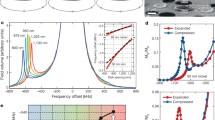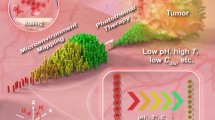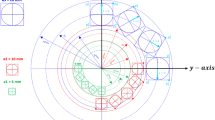Abstract
There is increasing interest in spatially localized NMR, such as low-cost NMR devices for organ-specific measurements, possibly with single-sided magnets. One method for obtaining spatial selectivity (to restrict the results to a specific organ) is to shape the static field, so that spins outside the central “sweet spot” are off-resonance and can be filtered out from the detected signal. However, the laws of magnetostatics dictate that the central sweet region will have “spider leg” extensions (extending outward from the center) where the field strength is unchanged from the central region. We address here the relative volumes of the central region and spider legs. We consider shaped fields of cylindrical symmetry of various orders n, where n reflects the leading term in field variation along the symmetry axis (that is, Zn). We find that this method of localization is unsuitable with low-order fields (2nd and 3rd orders), with a non-convergent fraction of volume in the spider legs. In these low-n cases, localization needs to be aided by a limited volume of rf field and/or by diffusion damping of echoes in regions of strong gradients. However, the fraction of volume residing in the spider legs becomes limited with higher-order fields, providing better localization. Results are also presented for two-dimensional fields.




Similar content being viewed by others
Availability of data and materials
No data sets were used in preparing this work.
References
A. Bashyam, C.J. Frangieh, M. Li, M.J. Cima, Dehydration assessment via a portable, single sided magnetic resonance sensor. Magn Reson Med 83, 1390–1404 (2020)
L.A. Colucci et al., Fluid assessment in dialysis patients by point-of-care magnetic relaxometry. Sci Transl Med 11, 1749 (2019)
M. Van Landeghem, E. Danieli, J. Perlo, B. Bluemich, F. Casanova, Low-gradient single-sided NMR sensor for one-shot profiling of human skin. J Magn Reson 215, 74–84 (2012)
M. Barahman, E. Grunvald, P.J. Prado, A. Bussandri, W.C. Henderson, T. Wolfson, K.J. Fowler, C.B. Sirlin, Point-of-care magnetic resonance technology to measure liver fat: phantom and first-in-human pilot study. Mag. Reson Med 88, 1794–1805 (2022)
C. Von Morze, as reported in this issue of Appl. Magn Reson. Privately communicated
J.J.H. Ackerman, T.H. Grove, G.G. Wang, D.G. Gadian, G.K. Radda, Mapping of metabolites in whole animals by 31P NMR using surface coils. Nature 283, 167–170 (1980)
W. Chen, J.J.H. Ackerman, Spatially-localized NMR spectroscopy employing an inhomogeneous surface-spoiling magnetic field gradient. 1. phase coherence spoiling theory and gradient coil design. NMR Biomed 3, 147–157 (1990)
B. Schaller, W.T. Clarke, S. Neubauer, M.D. Robson, C.T. Rodgers, Suppression of skeletal muscle signal using a crusher coil: a human cardiac 31P-MR spectroscopy study at 7 Tesla. Magn Reson Med 75, 962–972 (2016)
C.T.W. Moonen, M. von Kienlin, P.C.M. van Zijl, J. Cohen, J. Gillen, P. Daly, G. Wolf, Comparison of single-shot localization methods (STEAM and PRESS) for in vivo proton NMR spectroscopy. NMR Biomed 2, 201–208 (1989)
R.J. Ordidge, A. Connelly, J.A.B. Lohman, Image-selected in vivo spectroscopy (ISIS). a new technique for spatially selective NMR spectroscopy. J Magn Reson 6(6), 283–294 (1986)
W.P. Aue, S. Mueller, T.A. Cross, J. Seelig, Volume-selective excitation. a novel approach to topical NMR. J Magn Reson 56, 350–354 (1984)
R.E. Gordon, P.E. Hanley, D. Shaw, D.G. Gadian, G.K. Radda, P. Styles, P.J. Bore, L. Chan, Localization of metabolites in animals using 31P topical magnetic resonance. Nature 287, 736–738 (1980)
K.N. Scott, H.R. Brooker, J.R. Fitzsimmons, Phosphorus nuclear magnetic resonance: potential applications to diagnostic chemistry. J Comput Assist Tomogr 5, 302–303 (1981)
M.D. Hurlimann, D.D. Griffin, Spin dynamics of carr-purcell-meiboom-gill-like sequences in grossly inhomogeneous B0 and B1 fields and application to NMR well logging. J Magn Reson 143, 120–135 (2000)
A. Bashyam, M. Li, M.J. Cima, Design and experimental validation of unilateral halbach magnet arrays for single-sided magnetic resonance. J Magn Reson 292, 36–43 (2018)
E. Danieli, B. Bluemich, Single-sided magnetic resonance profiling in biological and materials science. J Magn Reson 229, 142–154 (2013)
J. Perlo, F. Casanova, B. Bluemich, Single-sided sensor for high-resolution NMR spectroscopy. J Magn Reson 180, 274–279 (2006)
W.S. Hinshaw, Image formation by nuclear magnetic resonance: the sensitive-point method. J Appl Phys 47, 3709–3721 (1976)
P.A. Bottomley, Spatial localization in NMR spectroscopy in vivo. Ann NY Acad Sci 508, 333–348 (1987)
Y.M. Pulyer, Generation of remote homogeneous magnetic fields. IEEE Trans Magnetics 38, 1553–1563 (2002)
M.W. Garrett, Axially symmetric systems for generating and measuring magnetic fields, Part 1. J Appl Phys 22, 1091 (1951)
R.L. Kleinberg, A. Sezginer, D.D. Griffin, Novel NMR apparatus for investigating an external sample. J Magn Reson 97, 466–485 (1992)
A.E. Marble, I.V. Mastikhin, B.G. Colpitts, B.J. Balcom, A compact permanent magnet array with a remote homogeneous field. J Magn Reson 186, 100–104 (2007)
S. Utsuzawa, E. Fukushima, Unilateral NMR with a barre magnet. J Magn Reson 282, 104–110 (2017)
S. Utsuzawa, Y. Tang, Y.-Q. Song, Inside-out NMR with two concentric ring magnets. J Magn Reson 333, 107082 (2021)
Acknowledgements
The authors appreciate helpful discussions with Shin Utsuzawa. J.J.H. Ackerman helped the authors understand the historical developments in this area; we thank him.
Funding
All funding for this work was provided by the authors’ home institution, ABQMR, Inc.
Author information
Authors and Affiliations
Contributions
The two co-authors contributed equally to all aspects of this work.
Corresponding author
Ethics declarations
Conflict of interests
The authors have no competing financial or personal interests related to this work.
Ethical approval consent to participate
No animals or human subjects were used in this work.
Additional information
Publisher's Note
Springer Nature remains neutral with regard to jurisdictional claims in published maps and institutional affiliations.
Prepared for Applied Magnetic Resonance issue on the occasion of Bernhard Bluemich’s 70th birthday.
Rights and permissions
Springer Nature or its licensor (e.g. a society or other partner) holds exclusive rights to this article under a publishing agreement with the author(s) or other rightsholder(s); author self-archiving of the accepted manuscript version of this article is solely governed by the terms of such publishing agreement and applicable law.
About this article
Cite this article
Conradi, M.S., Altobelli, S.A. Spatial selectivity by shaping the static field: sweet spots and spider legs. Appl Magn Reson 54, 1689–1700 (2023). https://doi.org/10.1007/s00723-023-01548-5
Received:
Revised:
Accepted:
Published:
Issue Date:
DOI: https://doi.org/10.1007/s00723-023-01548-5




